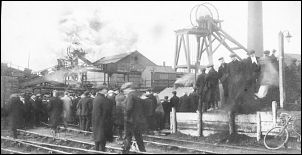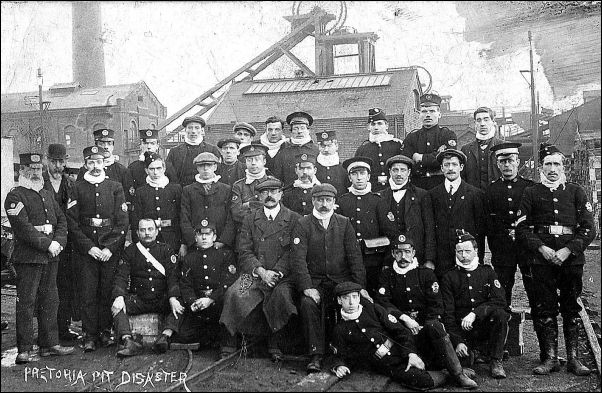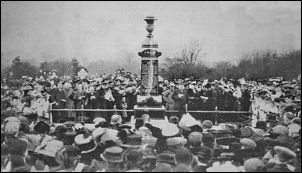|
Tue 9 Oct 2012
The Pretoria Pit Disaster (Westhoughton) Ė Alan Davies |
|
Alan made a
welcome return to speak to the society following a coal mining
related talk a few years ago. He has a strong background in coal
mining and, additionally, he has been researching mining history
for 40 years.
The Pretoria pit was on land of the Hulton private estate north
of Atherton, part of the south Lancashire coalfield. Mining had
taken place on that estate since the 14th century.
Two pits were sunk, numbers 3 and 4, in 1900 and 1901
respectively. They were commonly known as the Pretoria pit from
the South African town in the Boer War. They were sunk to
exploit the last pocket of coal there. |

Alan Davies |
| |
|
|
It was number 3
pit that suffered the explosion at 7.50am on 21 December 2010,
which caused the terrible loss of life. In all the lives of 344
men and boys were lost with ages ranging from 13 years old to
mid 60ís.
This pit was seen as a model colliery for its time. It was
managed by a Alfred Tonge and was one of the few pits using
electricity and had introduced modern methods of coal cutting. |

The pit head on the day of the explosion |
|

Men of Westhoughton Ambulance Brigade in front of the No.3 shaft
headgear and engine house.
Photo from Maxine |
|
In his vividly
illustrated presentation Alan included a wide selection of
contemporary photographs of the scenes around the pit following
the disaster. The mining community in and around Westhoughton
suffered a crushing blow by this tremendous loss of life.
Worsley council set up a relief fund the day after the disaster
and the last payment was, surprisingly, made from it as late as
1976.
Teams of men, Alanís grandfather amongst them, went down the pit
immediately following the explosion but it soon became clear it
was a recovery, not a rescue operation. His illustrations
included specially produced post cards that were sold to raise
money for the relief fund and headlines of newspapers, both
local and national. These gave a flavour of the impact the
tragedy had on the wider population.
The Inspector of Minesí official report identified a roof fall
as the cause of the explosion. It had broken a minerís lamp,
which in turn created a spark that ignited the coal dust.
However, the report revealed reports of gas underground in the
days before that had gone unheeded. Alfred Tonge did not
communicate with his managers and other failures in his
management regime and a flawed ventilation system contributed
also. |
|
A monument to
commemorate the dead was erected in Westhoughton cemetery and
stands there still. Alfred Tonge, however, moved to Canada to
manage a pit at Cape Breton. Tragically, that, too, suffered a
deadly explosion some 7 years later killing around 60 men.
Alanís excellent illustrated talk brought to life this appalling
tragedy, the folly that led to it and the lessons learned.
Peter Robinson |

Pretoria Pit in 1934 before closure.
No 3 shaft is on the left |
|

After the erection of the
Memorial in Westhoughton Cemetery |

Memorial to the 344 Men and Boys in Westhoughton Cemetery |
|
At the end of Broadway off Newbrook Road is a memorial to the
disaster behind a recently erected set of gates. Lettering on
the gates reads 'PRETORIA MEMORIAL 344'
The actual site is almost a mile away.
NEAR THIS SPOT IS THE SITE OF PRETORIA PIT WHERE 344 MEN & BOYS
LOST THEIR LIVES IN A MINING DISASTER ON DECEMBER 21st 1910 |
 |
|

Westhoughton Town Hall where the memorial to the cricketers is
fixed on the near corner of the building, |

Erected by the Bolton & District Cricket Association.
In memory of the Players and Committee-Men of the following
Clubs.
Westhoughton, Daisy Hill, Wingates and Chequerbent. |
| |
Other sites with information about the Pretoria Pit Disaster:
OnLine Parish Clerks, Lancashire, Westhoughton
Wikipedia
Leigh Life |